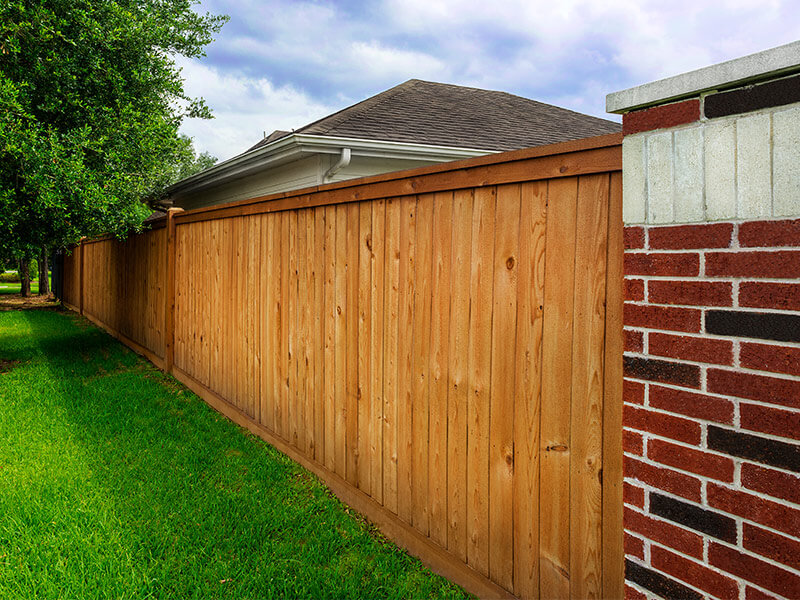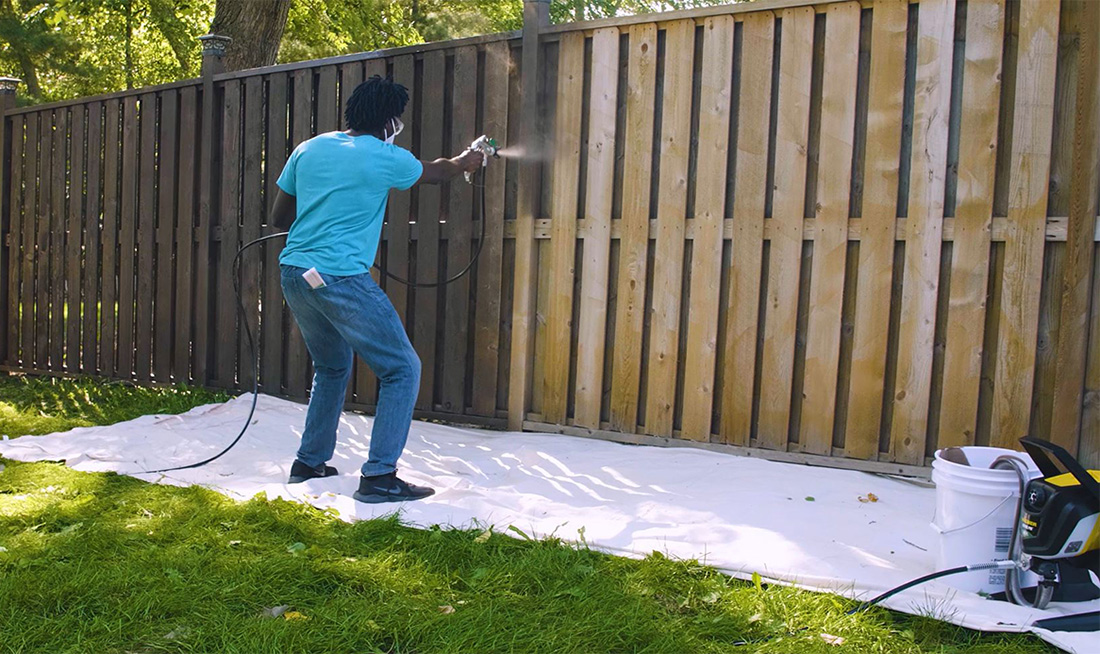Just How to Pick the Right Fence Spot for Your Home
When it comes to boosting the look and sturdiness of your property's fencing, picking the right stain is a critical decision that needs careful consideration. How can you make certain that you choose the excellent fence discolor that aligns with your residential or commercial property's style and maintenance needs?
Understanding Timber Types
To choose the suitable fence tarnish, it is necessary to have an extensive understanding of the different types of wood frequently made use of for fencing. The option of wood plays a crucial function in identifying the longevity and general visual appeals of the fence. Cedar is a popular choice as a result of its all-natural resistance to degeneration and bugs, making it a resilient alternative for outside frameworks. Pine is one more usual wood made use of in fencing, understood for its cost and convenience of staining. Nevertheless, yearn is a lot more prone to warping and deteriorating compared to cedar. Redwood is a high-end alternative understood for its striking appearance and all-natural durability, though it comes with a greater cost tag. When choosing a fence tarnish, it is necessary to think about the kind of timber being used to make sure compatibility and optimal protection. Comprehending the features of different wood types will assist you make a notified choice when it involves choosing the ideal fencing tarnish for your building - Fence Staining Nashville TN.
Picking the Right Shade
Selecting an appropriate hue for your fencing stain is a critical decision that substantially affects the total aesthetic appeal of your building. The shade you select should enhance the design of your home, blend sympathetically with the environments, and show your personal taste. When selecting a shade, think about the existing shade scheme of your building. For a natural look, natural tones like browns, greens, or grays work well. These shades can assist the fencing blend right into the landscape and develop a natural appearance. If you choose a more modern-day or vibrant look, take into consideration choosing darker tones like black or deep charcoal for a striking contrast. Lighter shades such as whites or light grays can make a fence show up larger and add a touch of beauty to your residential or commercial property. Ultimately, the ideal color selection will certainly improve the beauty of your fence and boost the general aesthetic charm of your home.

Thinking About Transparency Degrees
When selecting the right shade for your fencing tarnish, another vital facet to think about is the degree of transparency that will certainly finest suit your residential or commercial property's visual and upkeep requirements. Openness levels in fence spots usually fall into 3 groups: transparent, semi-transparent, and solid. Transparent stains permit the all-natural charm of the wood to reveal with while offering minimal defense against the elements. They are ideal for new or properly maintained fencings where showcasing the wood grain is a concern. Semi-transparent stains supply an equilibrium between shade improvement and protection, permitting some timber grain to be visible while providing modest protecting from UV rays and moisture. Strong spots, on the other hand, provide the most protection as they completely cover the wood with an opaque coating. These appropriate for older fences or those in requirement of substantial defense or shade modification. Take into consideration the level of direct exposure your fencing encounters, the preferred maintenance frequency, and the aesthetic you desire to achieve when picking the appropriate transparency degree for your fencing discolor.
Examining Upkeep Needs
Thinking about the long life and maintenance of your fencing, evaluating the maintenance needs is vital in figuring out one of the most ideal fencing stain for your building. The degree of upkeep needed for your fence can differ depending on variables such as the kind of timber, climate condition in your location, and your personal choices.
When assessing upkeep demands, it is essential to take into consideration the longevity of the fencing discolor. Some spots require more frequent reapplication than others, so picking a tarnish with a much longer life-span can help reduce the overall upkeep requirements of your fence (Fence Staining). In addition, variables such as resistance to UV rays, water, and mold can affect exactly how commonly you need to re-stain your fence

Checking Examples Before Application
Before using any fencing stain, it is a good idea to carry out sample tests to guarantee compatibility with the timber and desired aesthetic result. Evaluating examples permits you to examine exactly how the stain will certainly interact with the certain type of timber used in your fencing, as different timbers can absorb discolorations in different ways. To begin, select a tiny unnoticeable area of the fence to use the tarnish examples.
Verdict
To conclude, choosing their explanation the suitable fencing tarnish for your home involves understanding the timber kind, choosing the right color, considering transparency degrees, evaluating maintenance needs, and testing samples prior to application (Fence Staining). By taking these variables into factor to consider, you can ensure that your fencing discolor complements your building while supplying the necessary security and sturdiness. Make an informed decision to improve the look and durability of your fencing